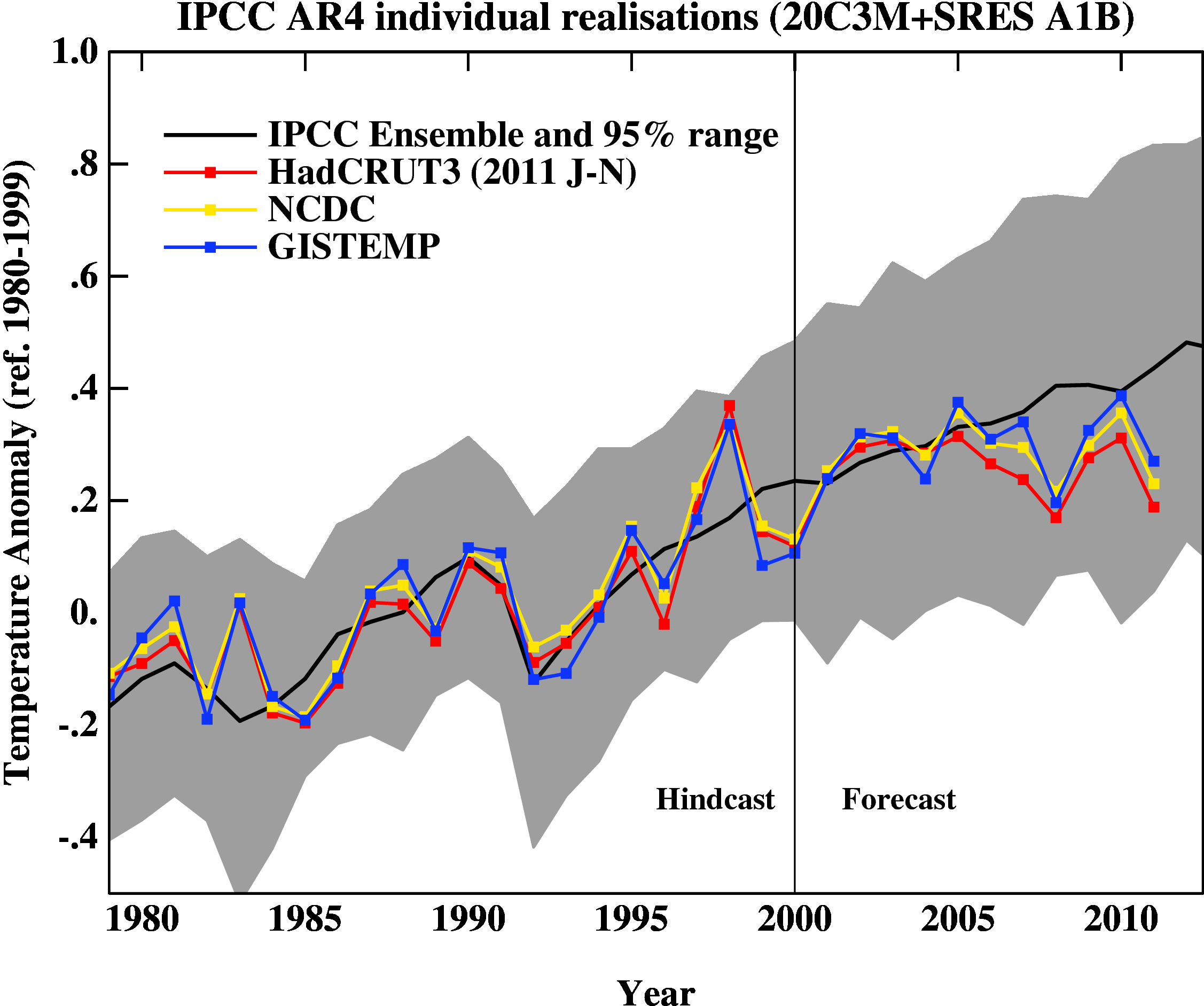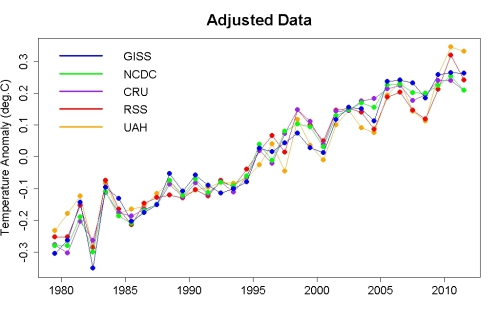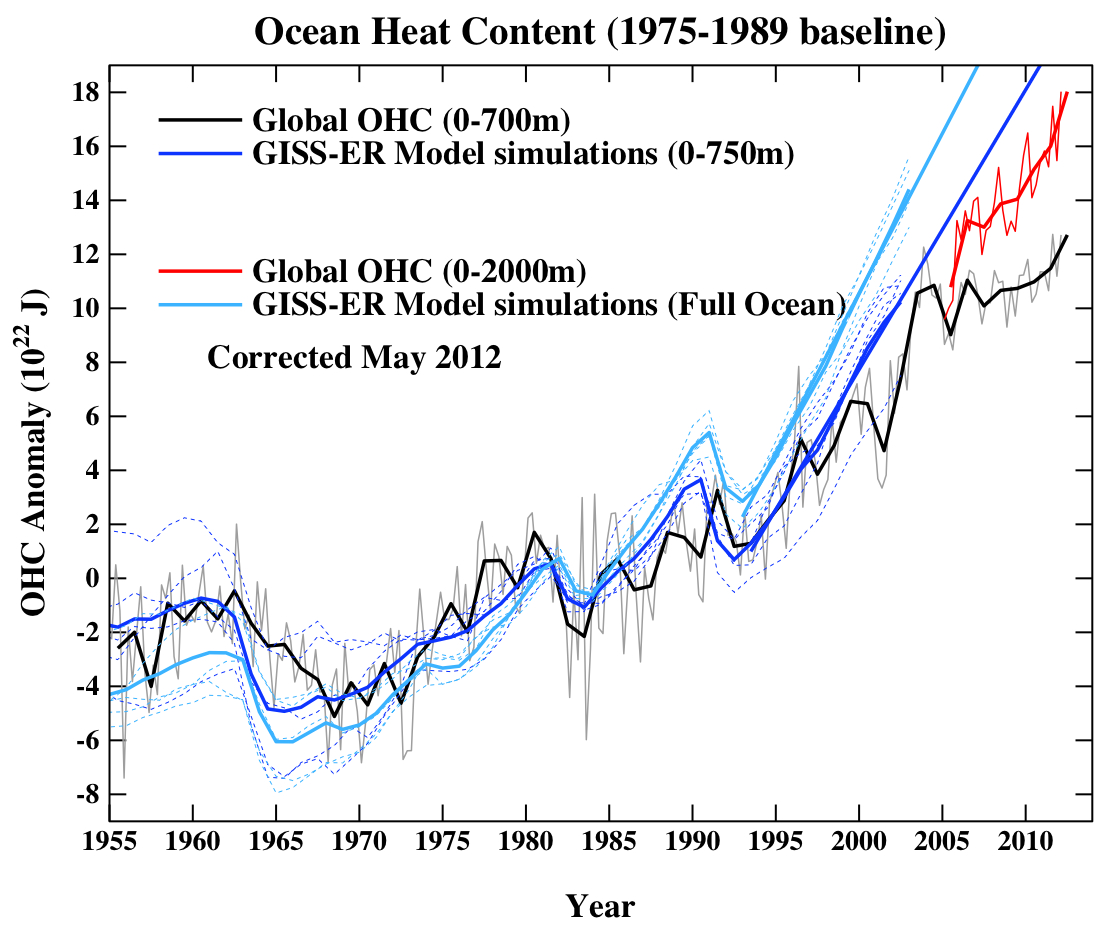[This post is basically excerpted from 2011 Updates to model-data comparisons, RealClimate, by gavin]
Curious about the global temperature trend after updating with last-years temperature record?
Mean-temperature rise since 1980
Mean anomalies from the IPCC AR4 models plotted on surface temperature records (HadCRUT3v, NCDC and GISTEMP). Everything is baselined to 1980-1999 and the envelope in grey encloses 95% of the model runs.

The La Niña event in 2011 cooled the year relative to 2010. Differences between the observational records are mostly related to interpolations in the Arctic. Given current indications of only mild La Niña conditions, 2012 will likely be a warmer year than 2011, so again another top 10 year, but not a record breaker – that will have to wait until the next El Niño.
Corrected for short-term processes
Foster and Rahmstorf (2011) showed nicely that if you account for some of the obvious factors affecting the global mean temperature (such as El Niños/La Niñas, volcanoes etc.) there is a strong and continuing increasing trend. An update to that analysis using the latest data is available here.
Ocean Heat Content
Ocean heat content (OHC) in the models compared to the latest data from NODC. All curves are baselined to the period 1975-1989.

Summer sea ice changes
Sea ice changes this year were dramatic, with the Arctic September minimum reaching record values (depending on the data product). Updating the Stroeve et al, 2007 analysis (courtesy of Marika Holland) using the NSIDC data we can see that the Arctic continues to melt faster than any of the AR4/CMIP3 models predicted.


No comments:
Post a Comment